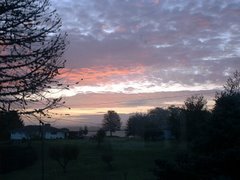Kathy Freston at Huffington Post
Excerpt:
If everyone went vegetarian just for one day, the U.S. would save:
● 100 billion gallons of water, enough to supply all the homes in New England for almost 4 months;
● 1.5 billion pounds of crops otherwise fed to livestock, enough to feed the state of New Mexico for more than a year;
● 70 million gallons of gas--enough to fuel all the cars of Canada and Mexico combined with plenty to spare;
● 3 million acres of land, an area more than twice the size of Delaware;
● 33 tons of antibiotics.
If everyone went vegetarian just for one day, the U.S. would prevent:
● Greenhouse gas emissions equivalent to 1.2 million tons of CO2, as much as produced by all of France;
● 3 million tons of soil erosion and $70 million in resulting economic damages;
● 4.5 million tons of animal excrement;
● Almost 7 tons of ammonia emissions, a major air pollutant.
My favorite statistic is this: According to Environmental Defense, if every American skipped one meal of chicken per week and substituted vegetarian foods instead, the carbon dioxide savings would be the same as taking more than half a million cars off of U.S. roads. See how easy it is to make an impact?






